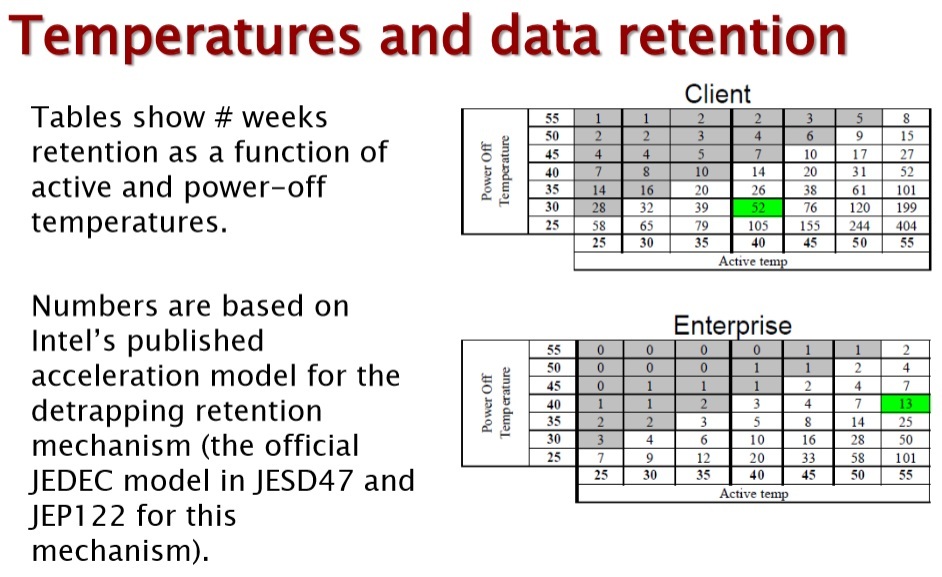The client class is for 40C active, 30C inactive, at 8 hours/day activity, with 52-week retention, versus enterprise at 55C, 40C, 24 hours/day, and 13-week, respectively (the 24 hours/day part is important). While client endurance workloads are based on traces, enterprise assumes 100% of SSD capacity with full random data (to emulate encryption). In other words, the metrics for which a drive must qualify for JEDEC - and that's what these tables represent - is stricter for enterprise.
Under similar constraints, for example same workload/WAF, you would be limited by the quality of the flash (and industrial/enterprise is often higher) and potentially some firmware optimizations, assuming your needs/demands are equivalent as well. For example, consumer drives tend to use dynamic SLC caching, which is not ideal for DC/enterprise. Likewise, enterprise drives often have more overprovisioning, which can reduce the WAF. DC/enterprise drives are often optimized for random writes also, for example, versus read-heavy consumer usage.
Retention in this case would refer to e.g. leakage, that is the time it takes before ECC and parity are unable to restore the data. Soft decoding is likely to be better, not worse, on enterprise drives, for example with larger codewords. A consumer example would be the SM2258 with 1Kb versus SM2259 with 2Kb (there are trade-offs), and the upcoming SM2264 with 4Kb. There's also read retry algorithms and more. I won't get into all of that, however retention can be impacted by many things - for example, program variation errors, disturb (e.g. program, read, etc), incongruity of cells (due to etching aspect ratio issues), and more, such that your usage of the drive can impact retention negatively with enterprise workloads for example.
tl;dr the workloads and standards for enterprise use are simply much higher than for consumer



